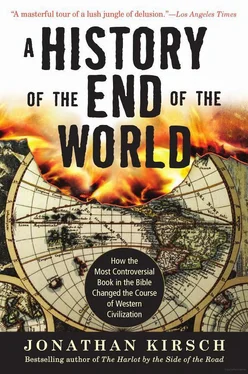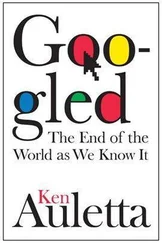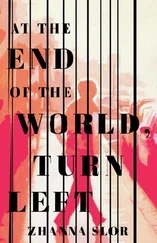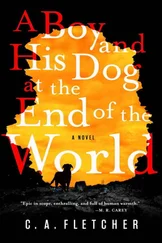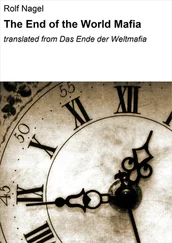“I am the first and the last,” goes a passage in The Book of Thunder, “I am the honored one and the scorned one, I am the whore and the holy one.” 46
The fate of the Gnostic Gospels suggests what might have happened to the book of Revelation if the would-be censors had been more successful: the Gnostic Gospels remained buried and forgotten for two thousand years until archaeologists retrieved them from Nag Hammadi in the twentieth century and thereby rewrote an early chapter in the history of Christianity. Revelation, too, was in danger of losing its place in the Christian scriptures and perhaps even disappearing from Christian tradition in the same way that Jewish apocalyptic texts like the book of Enoch were written out of rabbinical tradition.
The precarious status of the book of Revelation in the early Christian church, as it turns out, is confirmed in the writings of the church fathers. The ancient historian Eusebius frankly reports that Revelation “was considered genuine by some and spurious by others.” 47At certain moments, the controversy over Revelation was hot enough to divide members of the same family. One early and influential commentator, Gregory of Nazianzus, cites the book of Revelation in his own work, but his cousin, Amphilochius of Iconium, notes that “most call it spurious.” 48
The debate over whether Revelation belonged in the Bible was framed as a question about its authorship. According to one of the litmus tests adopted the early church fathers, only a writing that was regarded as “apostolic”—that is, a writing whose author was an apostle or a disciple of Jesus—was eligible for inclusion in the New Testament. Thus, the identity of the man who calls himself “John” in the book of Revelation turned out to be crucial. If the author was John, son of Zebedee, one of the original twelve disciples of Jesus of Nazareth, then Revelation was worthy of inclusion, but if the author was “another John,” as Bishop Dionysius declared in the third century, then it was to be excluded from the Christian scriptures. 49The fact that the book of Revelation struck Dionsyius as “senseless and without reason” was almost beside the point. “[T]hose things which I do not understand I do not reject,” he explained, “but I wonder the more that I cannot comprehend.” 50
One illuminating example of how canonization worked in the early Christian world—and how it might have worked in the case of Revelation—can be seen in the fate of a work called The Shepherd of Hermas. Like Revelation, it is a strange text with prophetic and apocalyptic passages, featuring a celestial visitor who bestows upon a human being the power to read and understand a book of divine secrets. It was probably composed sometime after 90 C.E., which means that The Shepherd of Hermas may have been roughly contemporaneous with Revelation. And, again as with Revelation, its author is believed to have been a Jewish convert to Christianity. Unlike Revelation, however, it is purely Christian, full of references to church, clergy, Christian rites and rituals, and other elements that are largely or wholly absent from Revelation.
Yet Revelation was ultimately welcomed into the Christian canon, and The Shepherd of Hermas was excluded for the simple reason that its author was self-evidently not an apostle or a disciple of Jesus Christ. Rather, it was plainly a work of recent authorship by a man who identifies himself as a resident of Rome. 51The book was a favorite among Christian communities of the second century, but popularity did not matter when it came to canonization. The Shepherd of Hermas was excluded from the earliest surviving document that defines the Christian canon—the so-called Muratorian Canon of the late second century—with the simple and sufficient explanation that it was written “in our own times.” 52
As late as the fourth century, the list makers were still divided on the question of whether Revelation ought to be included in Christian scripture. Athanasius (ca. 293–373), bishop of Alexandria and a fiery crusader against Christian heresies of all kinds, includes Revelation in his own catalog of the books of the New Testament, but it is omitted from the lists composed and endorsed by Cyril of Jerusalem (ca. 315–ca. 386) and, by a certain irony, the Council of Laodicea, one of the seven cities to which the author of Revelation addresses himself. Indeed, the book of Revelation was especially suspect in the eastern realm of Christianity, and it is notably absent from the biblical citations that appear in the writings of church fathers residing in such important eastern cities as Antioch and Constantinople.
In fact, Revelation did not make the first cut in the early version of the Bible as it was known and used in eastern Christianity. The Eastern Syrian Church rejected the book of Revelation, and it does not appear at all in the earliest Syriac translation of the Christian scriptures. As late as the ninth century, Revelation was still flagged as a “disputed” book in Byzantine church writings, and it was wholly omitted from a Byzantine list of Christian texts that were embraced as canonical. Not until the tenth century did Revelation begin to appear routinely in Greek manuscripts of the New Testament throughout Christendom. 53
Revelation may have had a slow and uncertain start in the very place where it was composed, but the western reaches of the Roman Empire were considerably more receptive. The New Testament as it was known and used in the West always included Revelation, and the text turned out to be especially influential in Germany, France, and England. Indeed, as we shall see, Revelation always seems to move ever westward, across Europe and all the way to America—a fact with fateful consequences for its function in our own age.
Even after Revelation finally secured its place in the Christian scriptures, the book continued to carry a certain bad odor. The bizarre imagery and the blood-shaking carnage favored by John were always off-putting to more-restrained Christian preachers and teachers. Not a word in the whole of Revelation offers any moral instruction about how to live a decent and righteous life hic et nunc— here and now. And the higher clergy were always concerned that some new Prisca or Maximilla would be encouraged by what she read in Revelation to start spouting her own visions and prophecies. The book of Revelation was tolerated, but it was also kept at a safe distance by some church authorities.
As one measure of its marginal status in early Christianity, for example, fewer than two hundred manuscripts of Revelation in its original Greek text—compared with more than two thousand manuscripts of the Gospels—survive from antiquity. “These totals,” reports Protestant Bible scholar and theologian Ernest Cadman Colwell, “accurately represent the relative prestige of these volumes in Eastern Christendom down through the Middle Ages.” Another sign of the same phenomenon can be discerned in one ancient biblical commentary whose author freely rendered passages from Revelation in conversational Greek but left the other books of the New Testament untranslated from the more formal Greek of the original text because, unlike Revelation, “they were too sacred!” 54
Even as late as the Reformation, when the conflict between Protestants and Catholics was often a matter of life or death, a few theologians on both sides of the struggle agreed on one thing: the book of Revelation was a dangerous text that required cautious handling. “Some gold is purer and better than other,” goes a dismissive comment about Revelation by Renaissance theologian Desiderius Erasmus (1469–1536) in a biblical treatise published in the early sixteenth century. “In sacred things also one thing is more sacred than another.” 55And Martin Luther, the Roman Catholic monk who set the Protestant Reformation into motion, was no less skeptical and far less oblique: he confessed his own inclination to wholly exclude the book of Revelation from the Bible on the grounds that it is “neither apostolic nor prophetic.” 56
Читать дальше
